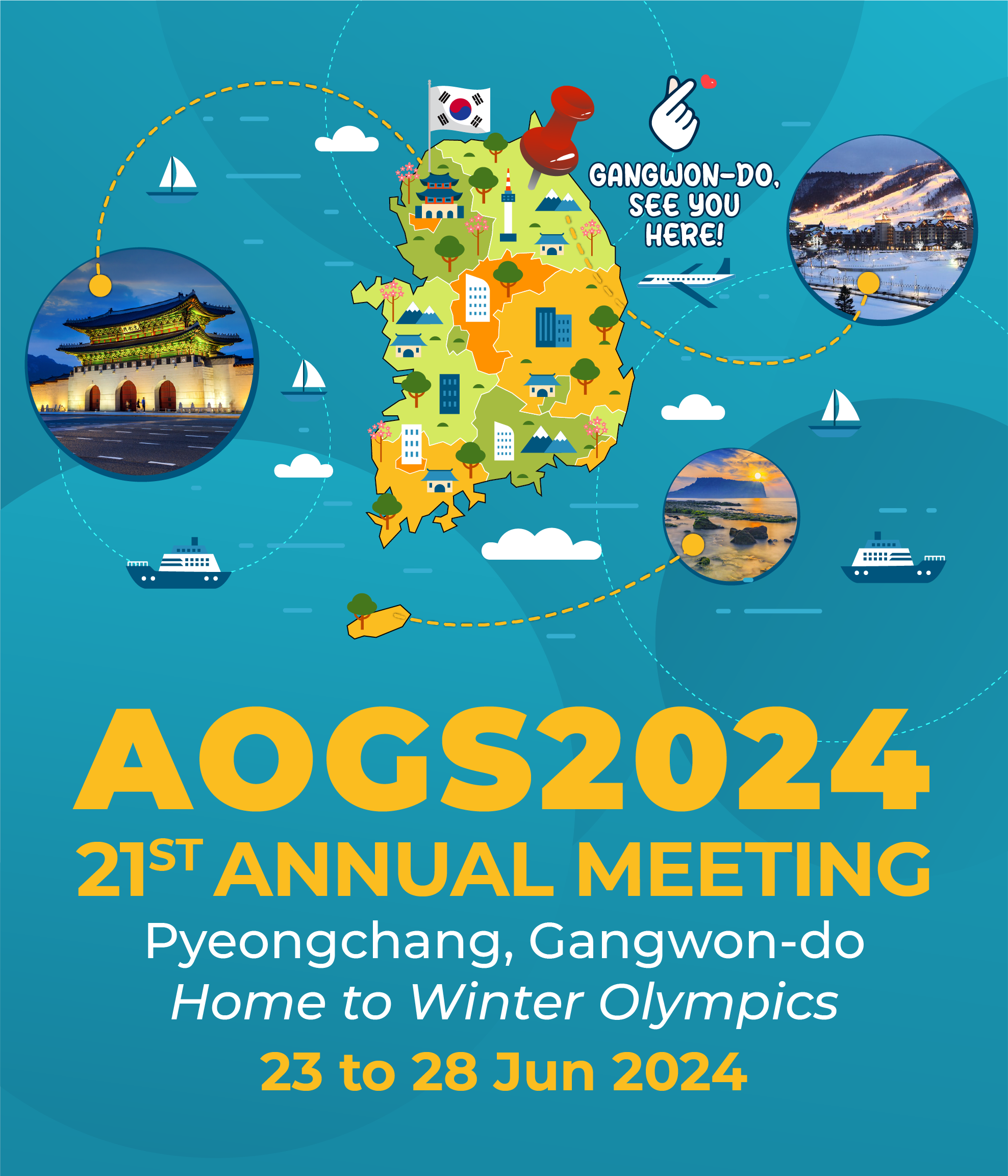
AS Kamide Lecture | 24 Jun (Mon) 11:00 AM - 12:30 PM | Auditorium, Alpensia Convention Center

Min-Seop AHN
Assistant Research Scientist
Global Modeling and Assimilation Office (GMAO), NASA Goddard Space Flight Center (GSFC)
Earth System Science Interdisciplinary Center (ESSIC), University of Maryland
Dr. Min-Seop Ahn is an Assistant Research Scientist at GMAO within NASA GSFC and ESSIC at the University of Maryland since May 2023. His research interests include: i) Dynamics, modeling, and prediction of Madden-Julian Oscillation (MJO); ii) Development of model evaluation metrics and process-oriented diagnosis; iii) Application of Machine Learning (ML) for Earth system modeling, prediction, and diagnosis. His current research project is on developing an ML-based parameterization of mesoscale air-sea interactions with Drs. Andrea Molod and Nathan Arnold.
He received his Ph.D. in Atmospheric Sciences from Seoul National University, South Korea, under the supervision of Prof. In-Sik Kang in 2017. The main focus of his thesis was on high-resolution global climate modeling, in particular on scale-adaptive convective parameterization and cloud microphysics. In parallel, he worked with the WMO WGNE MJO Task Force to diagnose the MJO simulations in CMIP5 models using the MJO diagnosis package developed by the US CLIVAR MJO working group. After receiving Ph.D., his first Post-doc was at the University of Washington with Prof. Daehyun Kim. He mainly worked on climate model simulations and diagnosis for MJO studies, focusing on the effects of a parameterization of mesoscale convective organization on MJO and mean state simulation, the role of Maritime Continent convection on MJO propagation, and development of a new metric measuring MJO propagation skill over the Maritime Continent. In May 2020, he started his second Post-doc at Lawrence Livermore National Laboratory with Drs. Peter Gleckler, Jiwoo Lee, and Paul Ullrich. He worked on advancing a PCMDI project for benchmarking simulated precipitation in Earth system models. He worked on the development of a suite of Python-based metrics gauging precipitation variability across timescales from sub-daily to interannual scales, a framework for evaluating precipitation distributions at regional scales, and a new metric quantifying bimodality in precipitation frequency distributions.
Madden-Julian Oscillation: Physical Mechanism and Model Simulation
The Madden-Julian Oscillation (MJO) is the dominant mode of tropical intraseasonal variability, which is characterized by a slow eastward propagating (~5m/s) planetary-scale envelope of enhanced convection coupled with large-scale circulation over the Indo-Pacific warm pool region. The MJO interacts with many weather and climate phenomena in the Earth system, including extreme events, tropical cyclones, monsoons, and ENSO, thereby providing a key source of predictability in the intraseasonal time scale.
Since the MJO was first discovered in the early 1970s, many theories have been proposed to explain its distinctive features. Among them, moisture mode theories introduced since the early 2010s could more intuitively explain the physical mechanisms of eastward propagation and maintenance of the MJO. In the moisture mode framework, MJO propagation and maintenance are understood as growth and decay processes of moisture anomalies. Consequently, moisture or moist static energy budget analysis could be applied to diagnose key processes in the propagation and maintenance of the MJO in observations and models, which has greatly advanced our understanding of the MJO mechanism.
Despite the progress in understanding the MJO, many Earth system models continue to struggle with a poor representation of the MJO. The unsatisfactory model performance calls for process-oriented diagnostics that can provide insights into the root cause of model biases to be improved for more accurate MJO simulation. The MJO research community has developed several process-oriented diagnostics for MJO simulation and applied them to various model simulations.
This presentation will provide an overview of the physical mechanisms of MJO propagation and maintenance within the moisture mode framework. It will also explore several MJO process-oriented diagnostics developed based on theories, including moisture or moist static energy budget, moisture-convection coupling, longwave radiation feedback, and gross moist stability. Our results suggest that the MJO simulation could be improved by increasing mean moisture around the Maritime Continent, enhancing moisture-convection coupling, strengthening longwave radiation feedback, and decreasing mean gross moist stability in models that inaccurately represent these physical processes or properties.
